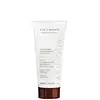What's inside
What's inside
 Key Ingredients
Key Ingredients

 Benefits
Benefits

 Concerns
Concerns

 Ingredients Side-by-side
Ingredients Side-by-side

Aloe Barbadensis Leaf Water
MaskingGlycerin
HumectantCetearyl Alcohol
EmollientDihydroxyacetone
Skin ConditioningCetyl Alcohol
EmollientGlyceryl Stearate
EmollientCeteareth-20
CleansingDimethicone
EmollientSaccharide Isomerate
HumectantButyrospermum Parkii Butter
Skin ConditioningSclerocarya Birrea Seed Oil
HumectantGlycyrrhiza Glabra Root Extract
BleachingRubus Idaeus Extract
Skin ProtectingPunica Granatum Extract
AstringentGinkgo Biloba Leaf Extract
Skin ConditioningCucumis Sativus Extract
Skin ConditioningHamamelis Virginiana Extract
AntiseborrhoeicFucus Vesiculosus Extract
EmollientCarica Papaya Fruit Extract
Skin ConditioningVitis Vinifera Juice Extract
AntioxidantCucumis Melo Fruit Extract
Skin ConditioningPropylene Glycol
HumectantTocopheryl Acetate
AntioxidantPanthenol
Skin ConditioningHydrolyzed Silk
HumectantSodium Citrate
BufferingCitric Acid
BufferingHyaluronic Acid
HumectantPhenoxyethanol
PreservativeEthylhexylglycerin
Skin ConditioningDisodium EDTA
Aloe Barbadensis Leaf Water, Glycerin, Cetearyl Alcohol, Dihydroxyacetone, Cetyl Alcohol, Glyceryl Stearate, Ceteareth-20, Dimethicone, Saccharide Isomerate, Butyrospermum Parkii Butter, Sclerocarya Birrea Seed Oil, Glycyrrhiza Glabra Root Extract, Rubus Idaeus Extract, Punica Granatum Extract, Ginkgo Biloba Leaf Extract, Cucumis Sativus Extract, Hamamelis Virginiana Extract, Fucus Vesiculosus Extract, Carica Papaya Fruit Extract, Vitis Vinifera Juice Extract, Cucumis Melo Fruit Extract, Propylene Glycol, Tocopheryl Acetate, Panthenol, Hydrolyzed Silk, Sodium Citrate, Citric Acid, Hyaluronic Acid, Phenoxyethanol, Ethylhexylglycerin, Disodium EDTA
Water
Skin ConditioningAloe Barbadensis Leaf Juice
Skin ConditioningIsopropyl Palmitate
EmollientBis-PEG-18 Methyl Ether Dimethyl Silane
EmollientCocoglycerides
EmollientDihydroxyacetone
Skin ConditioningButyrospermum Parkii Butter
Skin ConditioningGlyceryl Stearate
EmollientPolyacrylamide
Phenoxyethanol
PreservativeMethylparaben
PreservativeC13-14 Isoparaffin
EmollientTocopheryl Acetate
AntioxidantErythrulose
TanningParfum
MaskingPropylparaben
PreservativeLaureth-7
EmulsifyingCetyl Phosphate
EmulsifyingButylparaben
MaskingEthylparaben
PreservativeTriethanolamine
BufferingWater, Aloe Barbadensis Leaf Juice, Isopropyl Palmitate, Bis-PEG-18 Methyl Ether Dimethyl Silane, Cocoglycerides, Dihydroxyacetone, Butyrospermum Parkii Butter, Glyceryl Stearate, Polyacrylamide, Phenoxyethanol, Methylparaben, C13-14 Isoparaffin, Tocopheryl Acetate, Erythrulose, Parfum, Propylparaben, Laureth-7, Cetyl Phosphate, Butylparaben, Ethylparaben, Triethanolamine
Ingredients Explained
These ingredients are found in both products.
Ingredients higher up in an ingredient list are typically present in a larger amount.
This ingredient is also known as shea butter. It is an effective skin hydrator and emollient.
Emollients help soothe and soften your skin. It does this by creating a protective film on your skin. This barrier helps trap moisture and keeps your skin hydrated. Emollients may be effective at treating dry or itchy skin.
Shea butter is rich in antioxidants. Antioxidants help fight free-radicals, or molecules that may harm the body. It is also full of fatty acids including stearic acid and linoleic acid. These acids help replenish the skin and keep skin moisturized.
While Shea Butter has an SPF rating of about 3-4, it is not a sunscreen replacement.
Shea butter may not be fungal acne safe. We recommend speaking with a professional if you have any concerns.
Learn more about Butyrospermum Parkii ButterDihydroxyacetone, or DHA, is a simple sugar. It is frequently used in self-tanning products.
DHA binds to the amino acids in your dead skin cells to create a brown/orange color. Darkening begins to kick in a few hours after application and will continue to develop for up to 3 days. This ingredient can be drying.
Both the US and the EU have approved DHA in self-tanning products. In the EU, DHA is allowed at a maximum concentration of 10%. Most tanning products usually contain amounts between 3-5%.
If you are pregnant or have underlying medical conditions, it is best to speak with a dermatologist about using self-tanning products.
Learn more about DihydroxyacetoneGlyceryl Stearate is a mix of glycerin and stearic acid.
It is used to stabilize the mixing of water and oil ingredients. By preventing these ingredients from separating, it can help elongate shelf life. It can also help thicken the product's texture.
As an emollient, it helps soften skin and supports barrier-replenishing ingredients.
In cosmetics, Glyceryl Stearate is often made from vegetable oils or synthetically produced.
This ingredient may not be fungal-acne safe
Fun fact: The human body also creates Glyceryl Stearate naturally.
Learn more about Glyceryl StearatePhenoxyethanol is a preservative that has germicide, antimicrobial, and aromatic properties. Studies show that phenoxyethanol can prevent microbial growth. By itself, it has a scent that is similar to that of a rose.
It's often used in formulations along with Caprylyl Glycol to preserve the shelf life of products.
Tocopheryl Acetate is AKA Vitamin E. It is an antioxidant and protects your skin from free radicals. Free radicals damage the skin by breaking down collagen.
One study found using Tocopheryl Acetate with Vitamin C decreased the number of sunburned cells.
Tocopheryl Acetate is commonly found in both skincare and dietary supplements.
Learn more about Tocopheryl Acetate